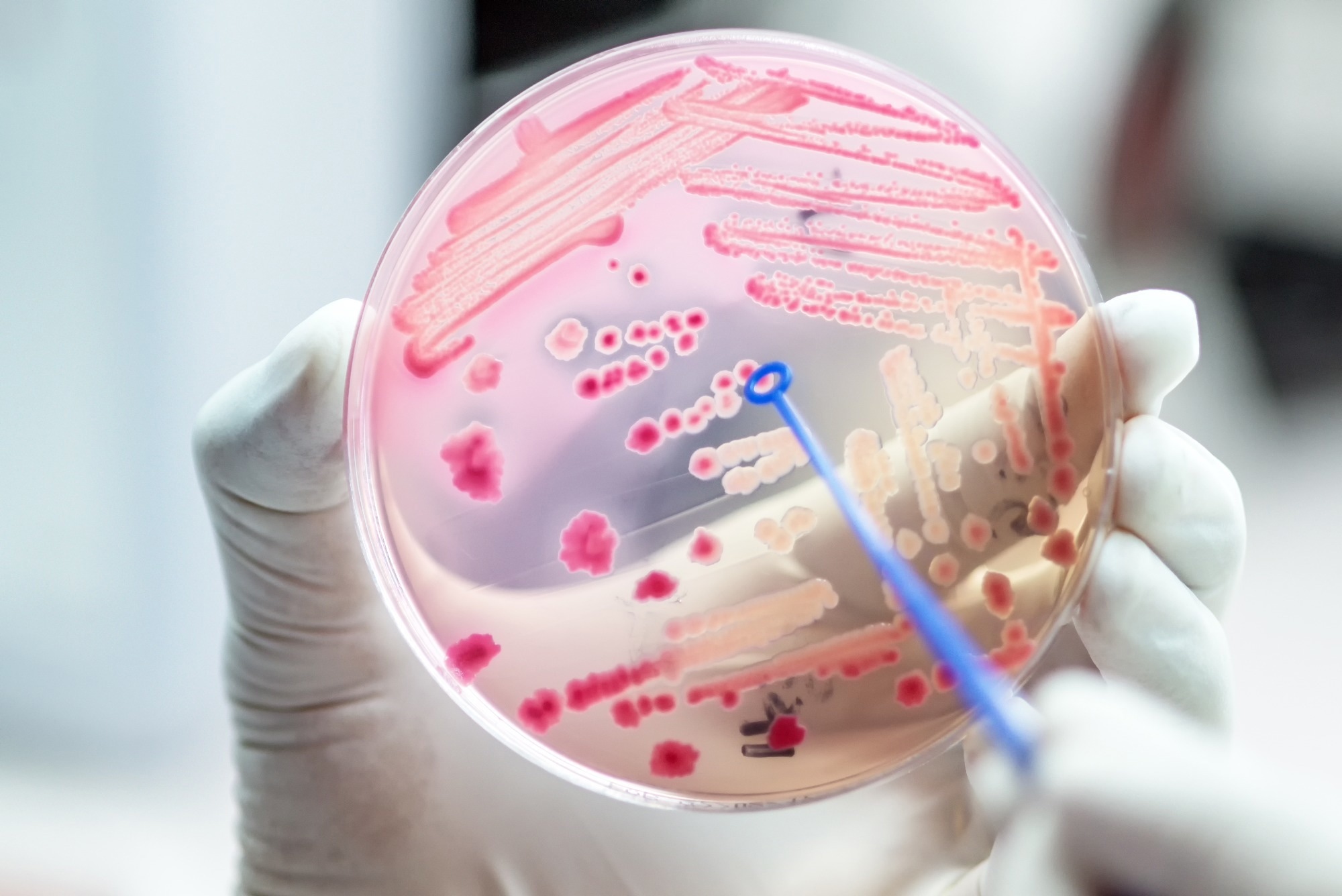When the intestinal flora is killed by antibiotics, a species of ordinary gut bacteria that humans carry flourishes. Because the bacteria are naturally immune to many drugs, it poses complications, especially in healthcare settings.
 Image Credit: AnaLysiSStudiO/Shutterstock.com
Image Credit: AnaLysiSStudiO/Shutterstock.com
A study led by Lund University in Sweden now demonstrates how two molecular pathways can collaborate to make the bacterium more resistant.
Using this knowledge, we hope to be able to design even better medicines.”
Vasili Hauryliuk, Senior Lecturer, Lund University
The threat posed by antibiotic-resistant bacteria is well-known and alarming. According to The Lancet, an estimated 1.27 million individuals died in 2019 as a result of bacterial infections that could not be cured with available treatments. Understanding the underlying molecular pathways is critical for combating this threat.
Antibiotic treatment disrupts the normal intestinal flora, allowing antibiotic-resistant bacterial pathogens to thrive that would otherwise be repressed by competition with the “good” gut bacteria. Clostridioides difficile, C. diff., is one of the most bothersome bacterial species.
It lives in human intestines, is resistant to antibiotics, and can cause severe diarrheal diseases. Because of the bacteria’s propensity to produce spores, it is easily transmitted and poses complications in healthcare settings, resulting in both greater mortality and longer treatment times.
“Instead of the antibiotic saving you, in this case, it promotes a secondary bacterial infection,” adds Vasili Hauryliuk.
The risk of infection with C. diff is known to increase after treatment with an antibiotic called clindamycin, but the reason for this was unknown. Our research showed a novel protein conveys resistance to the class of antibiotics to which clindamycin belong.”
Obana Nozomu, Assistant Professor, University of Tsukuba
The mechanism of C. diff resistance was studied in an international collaboration involving researchers from Sweden, Japan, the United Kingdom, the United States, Estonia, and Germany, and the findings were reported in Nucleic Acids Research. Studies identified a new protein that is responsible for resistance.
The protein acts on the ribosome, which is the molecular factory in bacteria that makes proteins and gives the bacteria its capabilities. One of the key antibiotic targets is the ribosome: if proteins cannot be synthesized, bacteria cannot grow, proliferate, and cause infection.
This newly discovered protein kicks the antibiotic molecule out of the ribosome. We also saw that it combines with another resistance factor. The second chemically modifies the ribosome so that the antibiotic molecules to bind less tightly to it. The extra-potent resistance is the result of two mechanisms, two factors, which combine and in so doing give the bacteria its ‘superpowers’ against antibiotics.”
Gemma C. Atkinson, Study Co-Author and Senior Lecturer, Lund University
The researchers employed cryogenic electron microscopy to explore antibiotic resistance mechanisms at the molecular level. This insight paves the path for new treatment strategies against bacterial resistance and infections.
“A couple of years ago, Andrew G. Myers lab at Harvard University has developed a new generation of ribosome-binding antibiotics, known as iboxamycin. It is a very potent medicine that knocks out ‘ordinary’ C. diff bacteria. The results of this study, however, show that C. diff strains that have both resistance factors are, unfortunately, resistant to this antibiotic as well,” notes Vasili Hauryliuk.
“This means that it is necessary to design antibiotic molecules that bind even tighter in order to overpower this kind of resistance. We now collaborate with the Myers group on this direction,” concludes Vasili Hauryliuk.
This research also revealed that some antibiotics that target the ribosome cause the resistance factor to be developed. Because resistance cannot be developed unless resistance factors are created, this could lead to the development of novel antibiotic molecules.
Source:
Journal reference:
Obana, N., et al. (2023). Genome-encoded ABCF factors implicated in intrinsic antibiotic resistance in Gram-positive bacteria: VmlR2, Ard1 and CplR. Nucleic Acids Research. doi.org/10.1093/nar/gkad193.